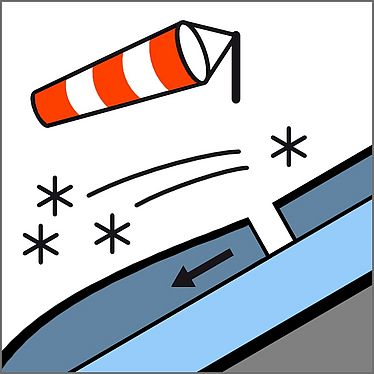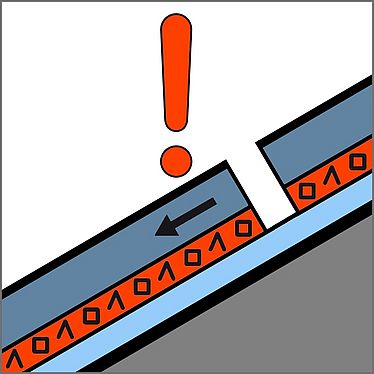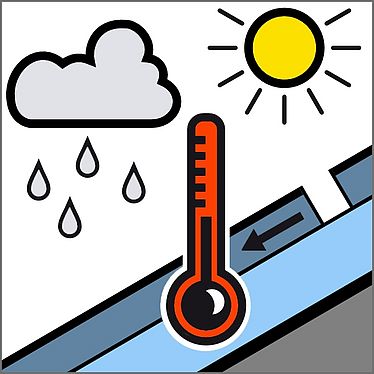AVALANCHE PROBLEMS
The five typical avalanche problems were defined by the Association of European Avalanche Warning Services (EAWS) to describe typical situations that occur in the terrain. Every avalanche problem has a different cause and requires appropriate behavior. In the avalanche situation report, the prevailing avalanche problems are also stated in the danger description.
Here is an initial overview of the five avalanche problems.

NEW SNOW PROBLEM
The problem arises from current snowfalls or fresh snow that has recently fallen. The main influencing factor is the critical amount of new snow, which depends on several factors such as temperature or properties of the old snow surface.

DRIVEN SNOW PROBLEM
The problem arises from wind-blown snow. The wind slab problem is relatively easy to recognize with practice and when visibility is good, unless the wind slab is covered by fresh snow.

OLD SNOW problem
The problem arises from existing weak layers within the old snowpack. The old snow problem is extremely difficult to detect. Information on snow cover development and information in the avalanche situation report/avalanche bulletin are important. Avoiding large steep slopes and exercising restraint are required.

Wet snow problem
The problem arises from an increasing weakening of the snow cover due to water ingress, either from melt or rain. The wet snow problem is usually easy to recognize. The beginning of rain, the formation of snowballs or snow rolls, small wet slabs or loose snow avalanches often herald wet avalanche activity

Gliding snow problem
The entire snow cover slides on smooth surfaces such as grassy slopes or smooth rocky areas. Although gliding snow cracks (fishmouths) are easy to recognize, it is virtually impossible to predict when they will be triggered. So don't stay near gliding snow cracks.
Danger patterns
Avalanche problems and danger patterns have one thing in common: they indicate typical, recurring and usually obvious dangerous situations.
The difference lies in the viewing level. While avalanche problems provide an initial rough overview of possible sources of danger (e.g. fresh snow), danger patterns delve deeper into the matter and look for the causes of the problem (e.g. problem caused by too much fresh snow on a weak layer).
Danger patterns therefore describe possible scenarios or processes that lead to the respective avalanche problem.
Here you will find the 10 danger patterns as a link to the videos, which will provide you with further information.
You can find further information about danger patterns in the book avalanche. by Rudi Mair & Patrick Nairz





